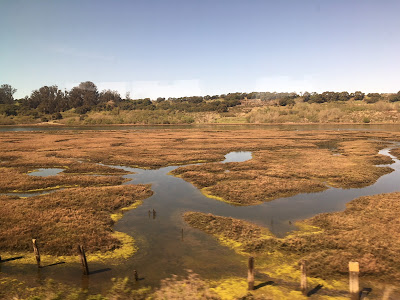I'm mad as hell...
at the love of my life
and I'm not going to take this anymore.
My feelings toward...
the love of my life
__________________________Picture this: You break your neck to take the 6:00PM bus from your work in Monterey Park to Downtown LA, to connect to a 6:20 bus that (Google Maps' transit directions say) will get you to your grandparents house right on time for a 7:05 dinner. The first bus arrives a few minutes behind schedule (given by Google Maps), but still gets you to Downtown with 5 minutes to spare. You run up the gently-sloping hill to the stop where you catch the second bus (1 minute). Then you wait 10 minutes: no bus comes.
Its 6:26 now. You take out your smartphone and ping GoogleMaps. From "your location" to my grandparents' address, the app now shows a bus that leaves at 6:38. "You couldn't have missed the 6:20!" your conscience yells. There were two other guys here who say they waited for 5 minutes before (though, did they actually keep track?). Still, its only another 10 minutes, the brain reasons: you take a deep inhale, sigh and return to playing free computer chess.
You lose yourself in plotting some crafty chess moves, eventually taking down a queen and a knight. At some point during the game, you press the home button on your phone by mistake and see that it is 6:50. Suddenly remembering that you are en route to dinner, and not a pawn in a game, you open up Google Maps again. This time, the transit directions instruct you to walk 1 mile to the south to catch a bus that will take 12 minutes longer to deliver you to your grandparents. You are stunned to see that you will not arrive until 8pm. You would miss dinner.
The new calculation throws you into a frenzy. You can order a Lyft Line or Uber Pool and maybe get to your grandparents only 30 minutes late. And yet, you are at a bus stop: what if the bus due at 6:38 miraculously appears a minute after you make your request, which you can't cancel without incurring a $5 penalty. Is a 50 percent or lower chance of saving time worth $11 extra? Your family is more forgiving of delay than, say, your boss, so you continue to wait...
After another 4 minutes, give or take, two buses show up. You board the latter one. Riding in light traffic, the bus drops you off 2 blocks from your grandparent's door at 7:30.
______________________________
I experienced this saga twice last Friday, first on the evening commute from work (as narrated) and later on a trip to the bar (the latter trip did not involve a transfer).
Although the delay was longer than usual, this was not the first time that a Google Maps transit schedule has deceived me. On most of my transit journeys in the Los Angeles region, in fact, Google's transit departure and arrival times seem to follow the official schedules, with buses arriving a few minutes before or after the time given on the application.
Even if such variability does not always cause excessive delay, it forces transit riders to leave extra time for contingencies (e.g. arriving at the bus stop 10 minutes ahead of Google's scheduled times) and diminishes their perceived agency over their trip schedule. By contrast, drivers benefit from real-time traffic information and point-to-point travel. Thus, driving (already privileged by roadway engineering, subsidized infrastructure, etc.) gains even more of an advantage over transit in Los Angeles, and transit riders ditch their straps for steering wheels once they acquire the resources.
Given that automobiles are the greatest source of Greenhouse Gas Emissions in the state of California, transit's inability to offer riders the accurate, real-time information offered to drivers fails not only transit enterprises, but society.
Why does Google Maps' transit planner (the most comprehensive transit planning application in terms of regional and national coverage) fail so miserably at providing accurate schedules for LA-area agencies? Is there a structural flaw in the GTFS specification? Does blame lie with the agencies or with Google (or both?)? I am interested in learning more about this problem and engaging with potential solutions.









